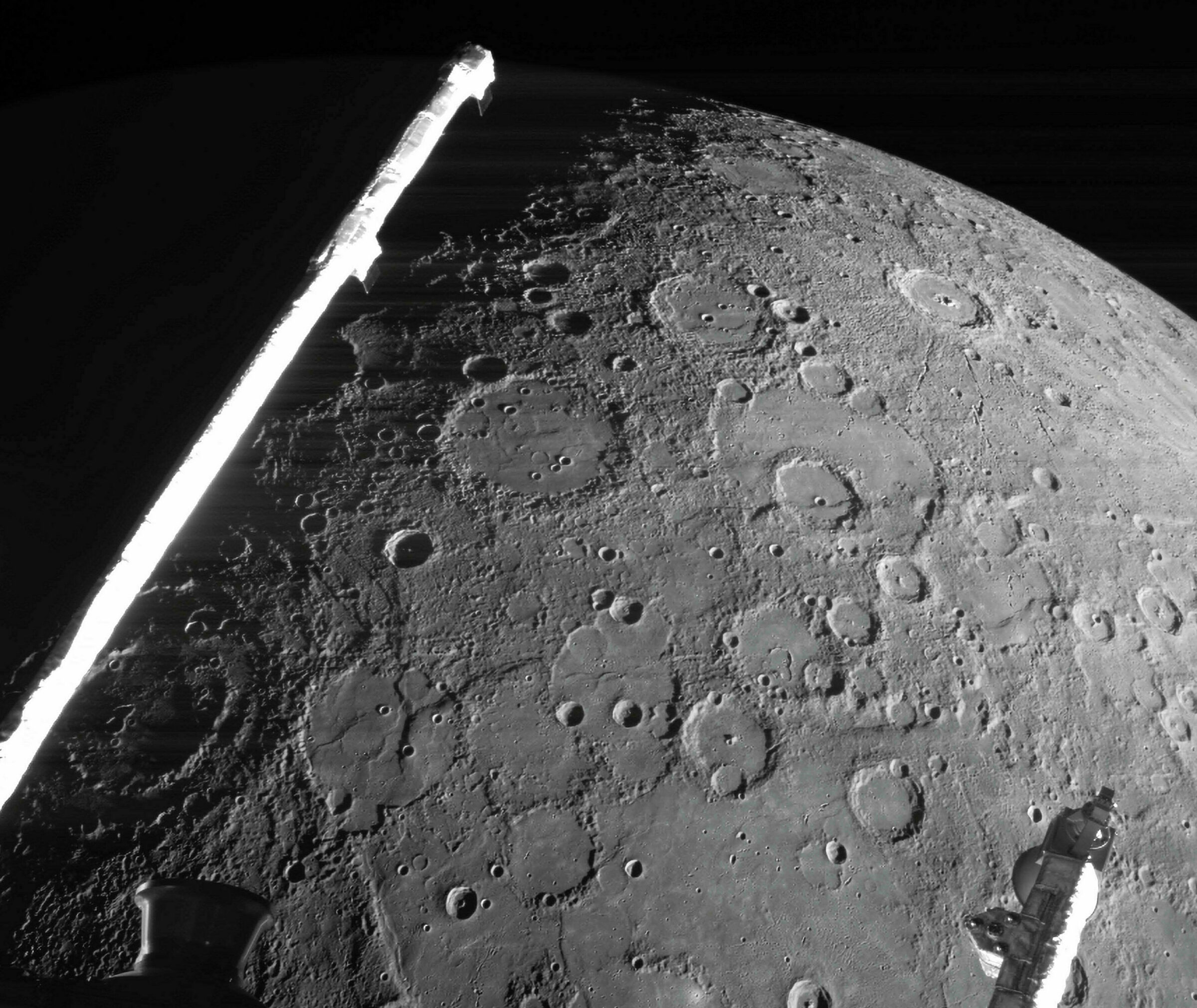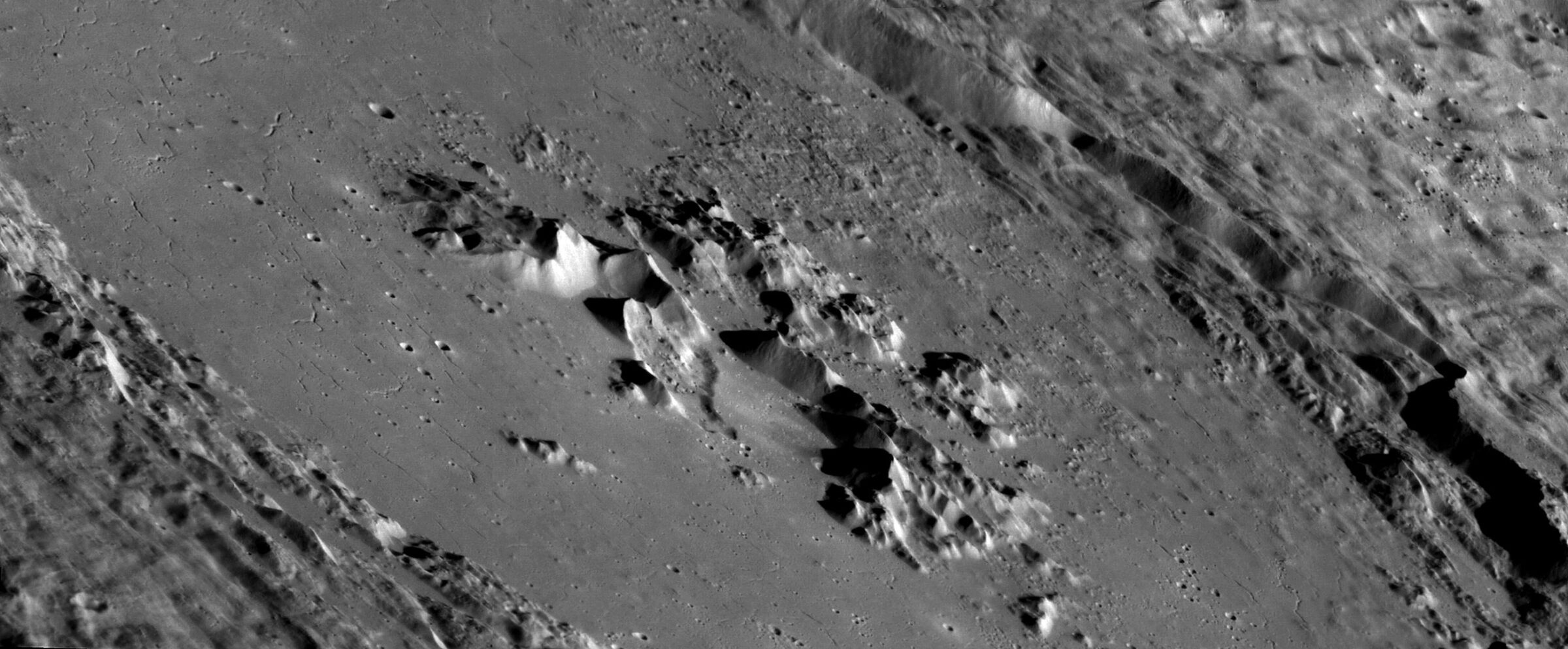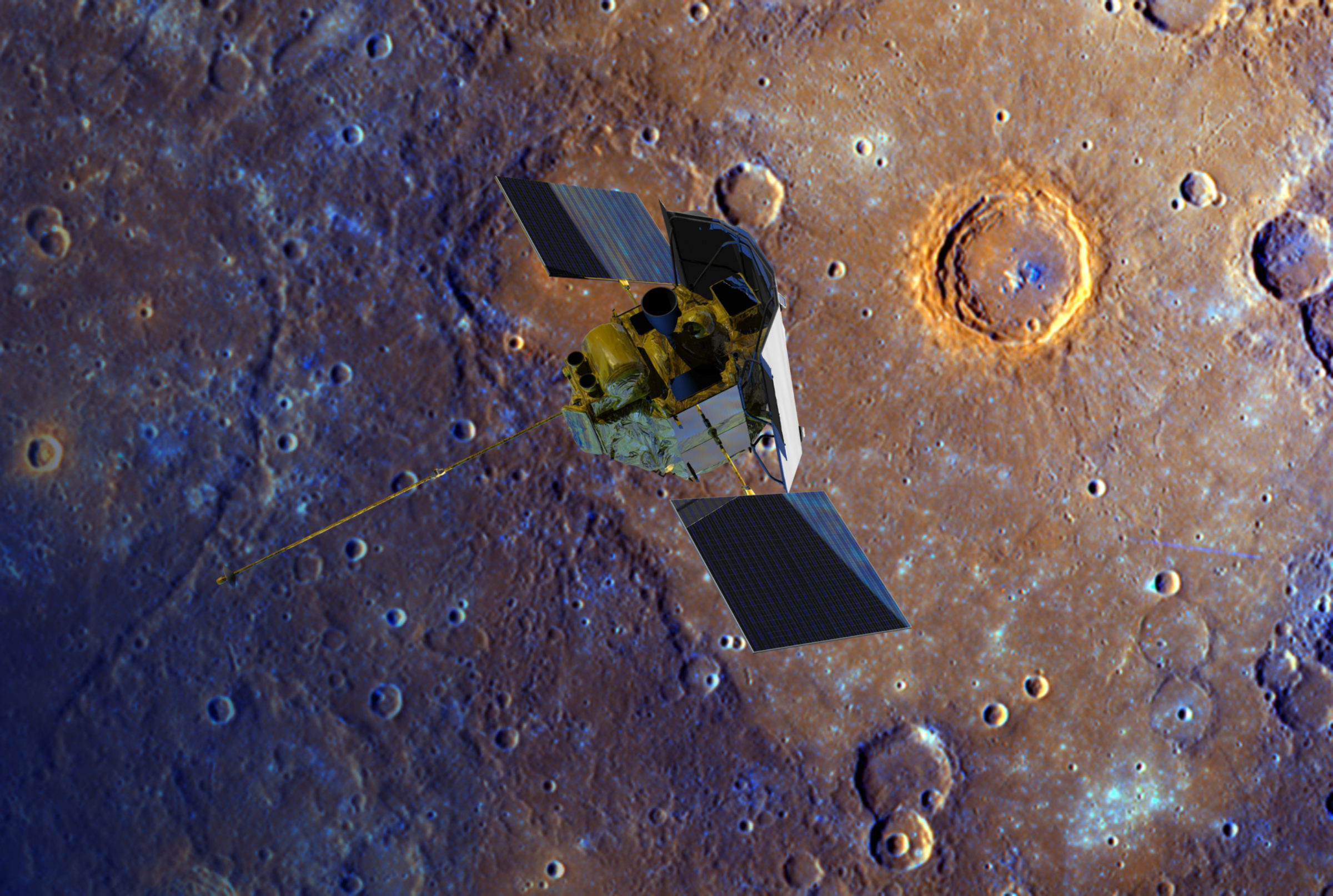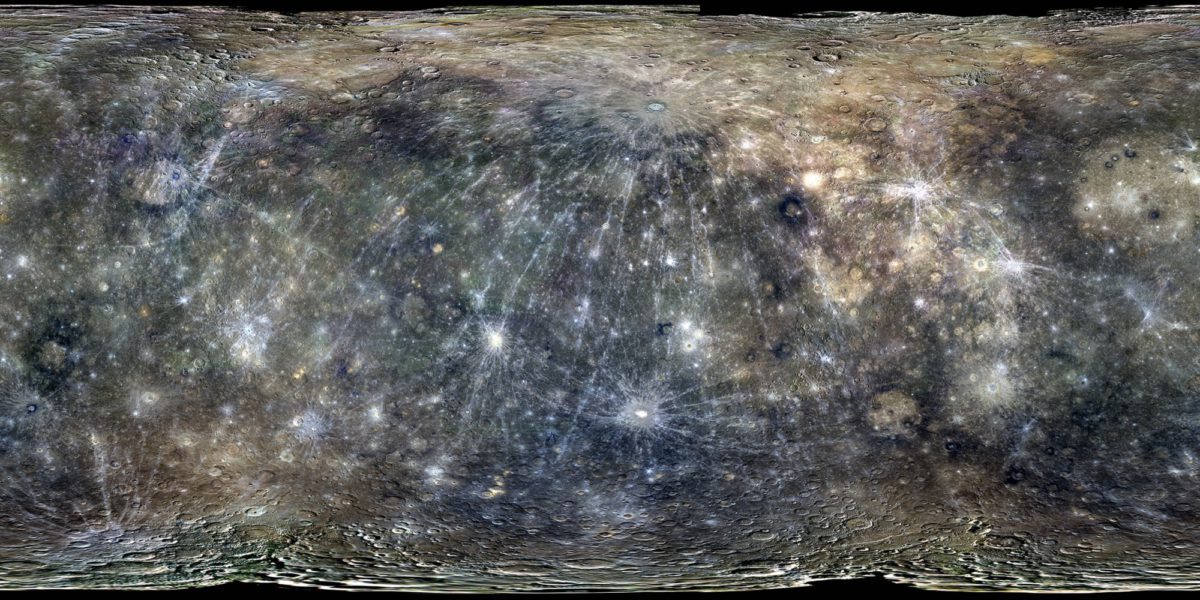Mercury, world of extremes
Highlights
- Mercury is the closest planet to the Sun, with surface temperatures of up to 430°C (800°F), but Venus is still hotter.
- Like the Moon, Mercury has water ice in craters at its poles that almost never see the Sun.
- Scientists study Mercury to learn about rocky planets throughout the galaxy, especially those orbiting close to their stars.
What’s Mercury like?
Mercury is the smallest planet in the Solar System and the closest one to the Sun. It's also a little-explored world, full of mystery, with a surface split into extremes and an interior that puzzles scientists.
Mercury is only slightly larger than Earth’s Moon. Similar to the Moon, the parts of Mercury lit by the Sun can get extremely hot, with temperatures on the planet reaching as high as 430 degrees Celsius (800 degrees Fahrenheit). But also like on the Moon, there are craters around Mercury’s poles that get extremely cold because they always remain in shadow — so cold they can even host water ice.

The surface of Mercury is covered in ridges and craters like the Moon, too. These impact craters trace billions of years of collisions with asteroids and comets. Some ridges are also caused by impacts, while others come from Mercury shrinking as its core cools, the same as on the Moon. The biggest crater on Mercury, Caloris Planitia, covers about one-tenth of the entire planet’s surface.
Beneath its surface, Mercury also has an enormous core. While Earth’s core makes up just 15% of its volume, Mercury’s core takes up about half of the entire planet. Scientists aren’t sure why this is the case. But there is evidence that part of the core is still molten, churning and driving a global magnetic field. Besides Earth, Mercury is the only rocky planet in the Solar System that sustains its own magnetic field like this.
Why study Mercury?
Mercury can teach us about how planets work, how the Solar System formed and evolved, and what types of planets are possible throughout the galaxy.
Scientists have discovered thousands of planets that orbit close to their stars like Mercury, but none of them are as easy to study. By sending probes to Mercury, we can learn what it’s like on fast-orbiting, hot planets elsewhere.

Solving the mystery of Mercury’s gigantic core would also help shape our understanding of the wider history of the Solar System. For example, it’s possible that Mercury was once larger until a giant impact — or just the bright young Sun’s radiation — threw off the planet’s outer layers and left behind mostly core. But data from past missions currently hint that neither of these explanations is right. Instead, Mercury may have originally formed with its core the way it is now. Finding out how and why will open us to new ideas about the early Solar System and how it shaped planets, including Earth, over time. And to do that, we have to send spacecraft to visit.
Mercury Facts
Surface temperature: -180°C (-290°F) to 430°C (800°F)
Average distance from Sun: 58 million km (36 million miles), more than twice as close to the Sun than Earth orbits
Diameter: 4,880 km (3,032 miles), 1.4 times bigger than the Moon
Volume: 61 billion km3 (15 billion mi3)
Gravity: 3.7 m/s², 38% of Earth’s
Solar day: 176 Earth days
Solar year: 88 Earth days
Atmosphere: Extremely thin, with pressure at the surface roughly one-quadrillionth that on Earth
Exploring Mercury
Studying Mercury is a challenge — it actually takes more energy for a spacecraft to reach Mercury than Pluto. Since Mercury is the fastest-orbiting planet in the Solar System, every mission to visit Mercury has had to fly past other planets, like Earth and Venus, to gravitationally slingshot themselves toward Mercury..
Only three spacecraft have ever made the trip. In the 1970s, NASA’s Mariner 10 made three flybys of the planet, revealing its crater-ridden surface and magnetic field. Over 30 years would pass before NASA’s MESSENGER became the first spa

MESSENGER gave us a more complete picture of Mercury than ever before. The spacecraft took images, mapped the planet’s surface, studied its exosphere through UV emission, and measured its composition through gamma-ray emission and X-ray emission. The results revealed that Mercury had a much larger core than expected, an offset magnetic field, and ample evidence of water ice at the poles.
Lastly, the BepiColombo mission is currently on its way to Mercury and will arrive in 2025. BepiColombo is a joint Japanese-European effort made up of two probes, both launched together in 2018. Once in orbit around Mercury, they will characterize the planet’s magnetic field, exosphere, polar ice deposits, and internal structure..
Why is it called Mercury?
The English name for the planet Mercury comes from the Romans, who named the planet after the fleet-footed god Mercury (to the Greeks, Apollo) because it moved across the sky faster than any of the other planets. The planet Mercury is not named after the element mercury — the substance often used in thermometers — instead, the element is also named after the Roman god because it flows so quickly and easily. Hence the element’s other name, quicksilver.

Action Center
Whether it's advocating, teaching, inspiring, or learning, you can do something for space, right now. Let's get to work.


 Explore Worlds
Explore Worlds Find Life
Find Life Defend Earth
Defend Earth


